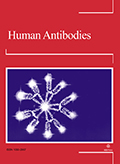Authors: El Allam, Aicha | El Fakihi, Sara | Tahoune, Hicham | Sahmoudi, Karima | Bousserhane, Houria | Bakri, Youssef | El Hafidi, Naima | Seghrouchni, Fouad
Article Type:
Research Article
Abstract:
The number of circulating lymphocytes is altered in a number of diseases including either increase (lymphocytosis) or decrease (lymphocytopenia). Therefore, the assessment of total blood lymphocyte numbers and the relative distribution of lymphocyte subsets is a critical front-line tool in the clinical diagnosis of a number of diseases, including pediatric diseases and disorders. However, the interpretation of this data requires comparison of patient’s results to reliable reference values. Blood lymphocyte subpopulation numbers are also subject to genetic polymorphisms, immunogenic and environmental factors and vary greatly between populations. While the best practice reference values should be established within local representative populations
…of healthy subjects, to date, Caucasian reference values are used in Morocco due to the absence of indigenous reference values. Potential differences in blood lymphocyte subpopulation reference values between Caucasian versus Moroccan populations can adversely affect the diagnosis of pediatric and childhood diseases and disorders such as primary immunodeficiency (PID) in Morocco. OBJECTIVE: The aim of this study was to establish the age-stratified normal reference values of blood lymphocyte subsets for the pediatric Moroccan population. METHODS: We measured the concentration of lymphocyte subpopulations by flow cytometry from 83 Moroccan healthy subjects stratified into 5 age groups of 0–1, 1–2, 2–6, 6–12 and > 12–18 (adult). RESULTS: The absolute and relative amounts of the main lymphocyte subsets of T-cells, B cells and Natural Killer (NK) cells were measured and compared to previously described reference values from Cameroonian, Turkish, American and Dutch populations. Additionally, we also observed an age-related decline in the absolute population sizes of lymphocyte subsets within our study group. Relative proportions of CD3 + CD4 + helper T lymphocytes decreased with increasing age and by 12 years-adult age, both proportions of CD3 + CD4 + helper T lymphocytes and CD3 + CD8 + cytotoxic T lymphocytes, as well as CD3 - CD19 + B lymphocytes were also decreased. Finally, we compared the median values and range of our Moroccan study group with that of published results from Cameroon, Turkey, USA and Netherlands and observed significant differences in median and mean values of absolute number and relative proportions of lymphocyte subsets especially at 0–1 years and 1–2 years age groups. Above age 12 years, the Moroccan values were lower. For NK cells, the Moroccan values are also lower. CONCLUSIONS: The results of this study have a significant impact in improving the threshold values of the references intervals routinely used in the diagnosis of paediatric diseases such as PIDs or mother-to-child transmitted HIV within the Moroccan population.
Show more
Keywords: Primary immunodeficiency diseases, diagnosis, blood leucocytes, reference values, pediatric population
DOI: 10.3233/HAB-200432
Citation: Human Antibodies,
vol. 29, no. 1, pp. 85-94, 2021
Price: EUR 27.50





